Variants on recurrent nets
- Architectures
- How to train recurrent networks of different architectures
- Synchrony
- The target output is time-synchronous with the input
- The target output is order-synchronous, but not time synchronous
One to one
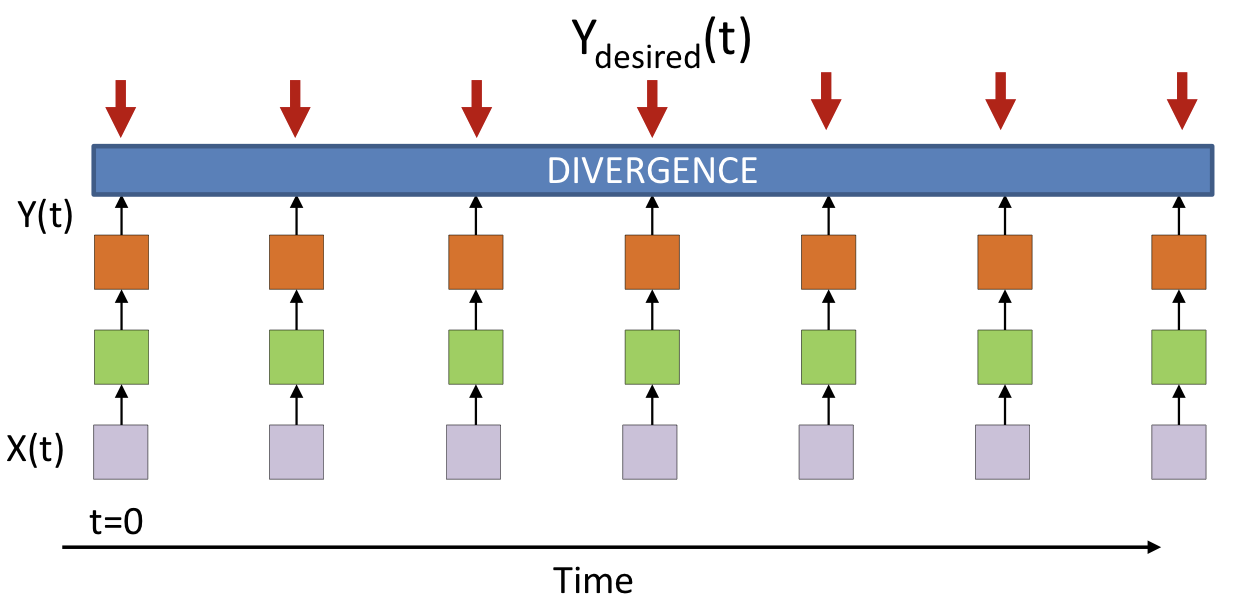
No recurrence in model
- Exactly as many outputs as inputs
- One to one correspondence between desired output and actual output
Common assumption
- is typically set to 1.0
Many to many
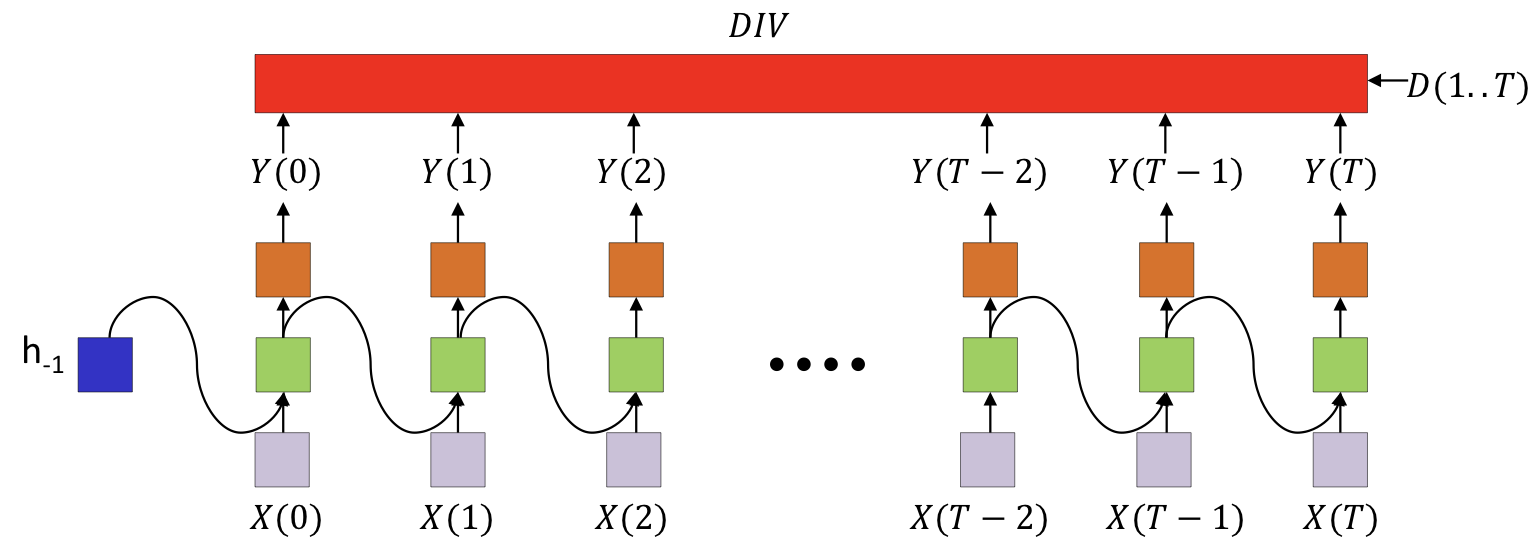
- The divergence computed is between the sequence of outputs by the network and the desired sequence of outputs
- This is not just the sum of the divergences at individual times
Language modelling: Representing words
Represent words as one-hot vectors
- Sparse problem
- Makes no assumptions about the relative importance of words
The Projected word vectors
- Replace every one-hot vector by
- is an matrix
How to learn projections

- Soft bag of words
- Predict word based on words in immediate context
- Without considering specific position
- Skip-grams
- Predict adjacent words based on current word
- Soft bag of words
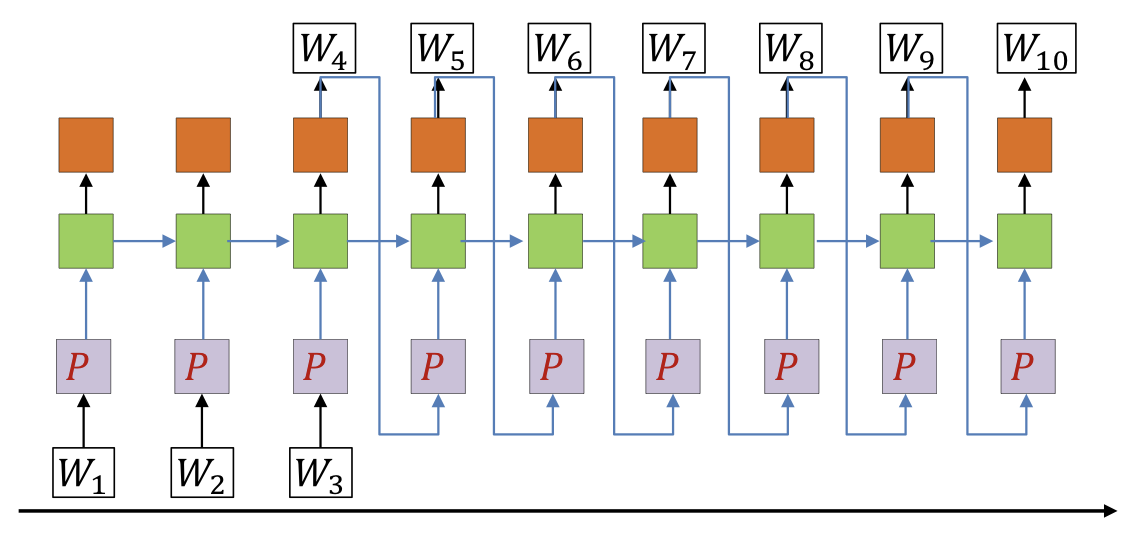
Many to one
- Example
- Question answering
- Input : Sequence of words
- Output: Answer at the end of the question
- Speech recognition
- Input : Sequence of feature vectors (e.g. Mel spectra)
- Output: Phoneme ID at the end of the sequence
- Question answering

Outputs are actually produced for every input
- We only read it at the end of the sequence
How to train
- Define the divergence everywhere
- Typical weighting scheme for speech
- All are equally important
- Problem like question answering
- Answer only expected after the question ends
- Define the divergence everywhere
Sequence-to-sequence
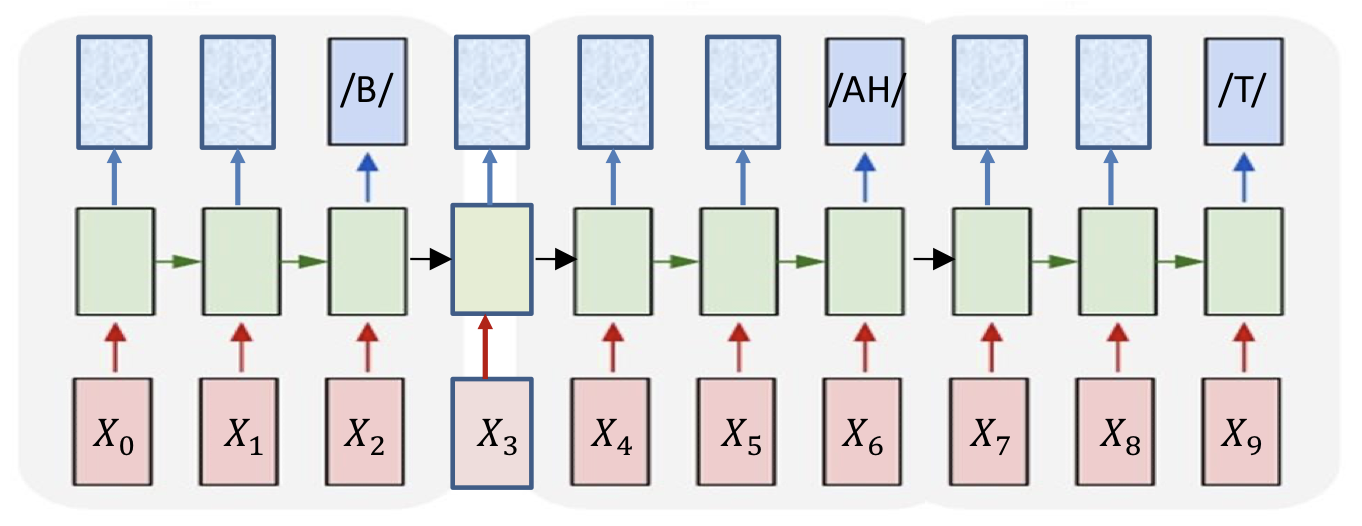
- How do we know when to output symbols
- In fact, the network produces outputs at every time
- Which of these are the real outputs
- Outputs that represent the definitive occurrence of a symbol
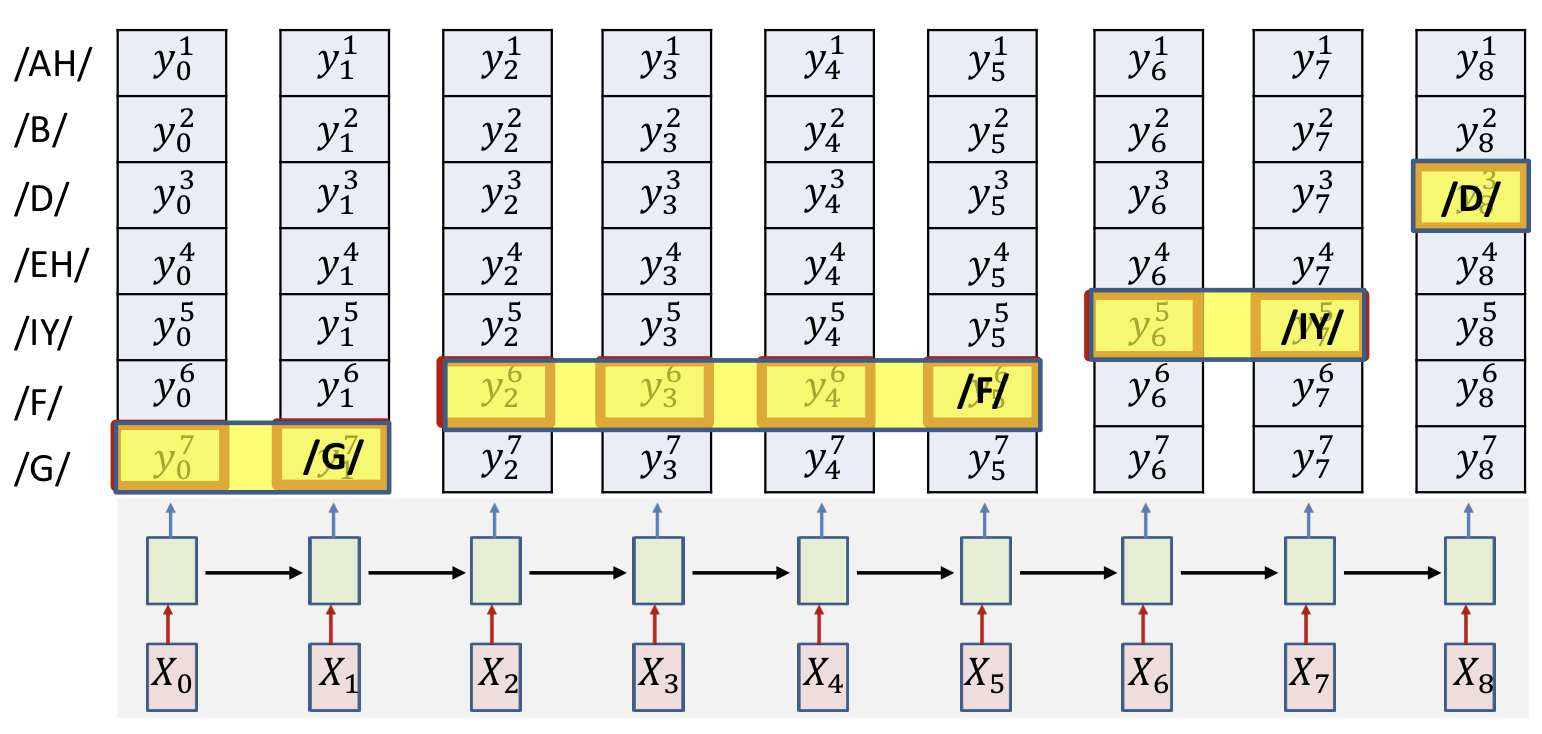
- Option 1: Simply select the most probable symbol at each time
- Merge adjacent repeated symbols, and place the actual emission of the symbol in the final instant
- Cannot distinguish between an extended symbol and repetitions of the symbol
- Resulting sequence may be meaningless
- Option 2: Impose external constraints on what sequences are allowed
- Only allow sequences corresponding to dictionary words
- Sub-symbol units
- How to train when no timing information provided
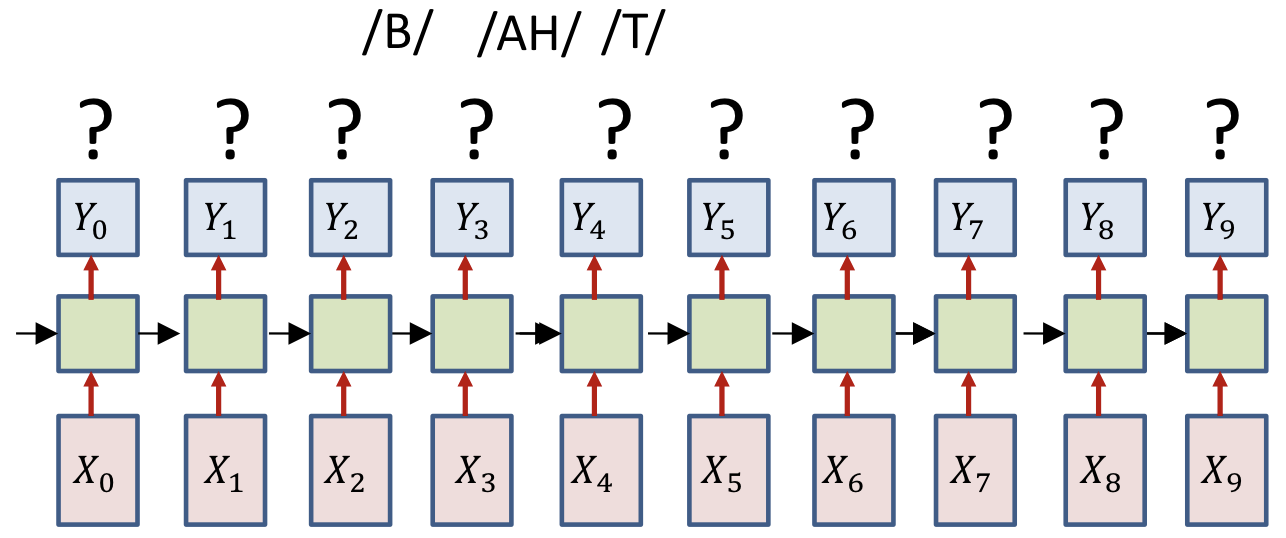
- Only the sequence of output symbols is provided for the training data
- But no indication of which one occurs where
- How do we compute the divergence?
- And how do we compute its gradient